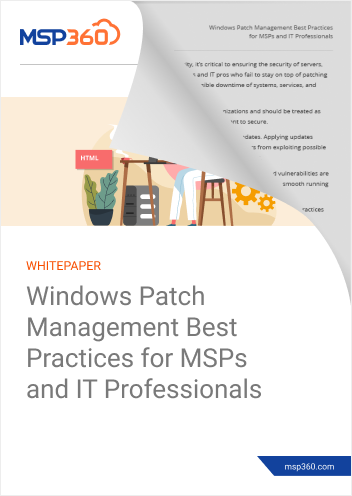When it comes to increasing cybersecurity, patching known vulnerabilities is one of the easiest ways an organization can make a big difference in improving its risk posture against today’s biggest threats. According to one survey by the Ponemon Institute, 57 percent of attack victims said their breach could have been prevented if they had just installed an available patch.
However, keeping up with patches and ensuring they are implemented correctly across all devices across the organization is often easier said than done. More than 18,000 new vulnerabilities (called Common Vulnerabilities and Exposures, or CVEs) are published in a year — an average of around 50 new vulnerabilities a day. Each of these vulnerabilities must be checked across the organization to see if they apply, then patched individually to maintain true security.
As a managed services provider (MSP), you can play an important role in this process. A robust patch management strategy is essential in order to protect networks from vulnerabilities and potential breaches. However, before diving into the patching process, you must first prioritize device identification — a fundamental step that sets the foundation for a secure and reliable network.
A basic step it may be, but device identification forms the backbone of any effective patch management program. Device identification means getting a complete and ongoing inventory of all the devices connected to customer networks. By knowing what devices you have inside the organization, you can better ensure that every device or system is noticed and protected, as well as prioritize your efforts towards those assets that you know live within the organization. After all, you can’t protect what you don’t know you have.
A comprehensive device identification process involves meticulously scanning the entire network to recognize all connected devices, ranging from computers and servers to Internet of Things (IoT) devices and network peripherals. This process is only made more complicated by today’s remote working environment and the widespread adoption of BYOD (Bring Your Own Device) policies, which may cause employees to connect their devices to the network. They can confidently proceed with the patch management process only when you have complete visibility into the network.
Skipping this important step can leave the organization vulnerable — something no MSP wants for its customers. When you lack a clear understanding of all the devices on the network, it leaves room for vulnerabilities to go unnoticed. Unpatched or outdated devices become prime targets for cybercriminals looking to exploit weaknesses. One compromised device could lead to a domino effect, compromising the integrity of the entire network.
There are a number of processes you can implement as an MSP to ensure complete visibility of all network-connected devices across your customers’ environments. First, you can implement automated network scans, including leveraging specialized tools and software to avoid manual processes that may miss devices, as well as continuous monitoring processes to ensure a complete ongoing inventory of devices even as the environment changes over time. Additionally, MSPs can implement network segmentation to help simplify device identification and limit attack impact while patches are implemented. At the same time, patch prioritization focuses on critical systems and devices.
Proper patch management demonstrates a proactive approach to cybersecurity, instilling confidence in clients who rely on you to safeguard their business operations. The trust built through effective patch management can lead to stronger client relationships and better business outcomes. A proactive approach to device identification and patch management not only reduces vulnerabilities but also strengthens the overall security posture of businesses, bolstering trust and confidence in your capabilities as a strong partner.
Further reading The Essentials of Third-Party Patch Management







